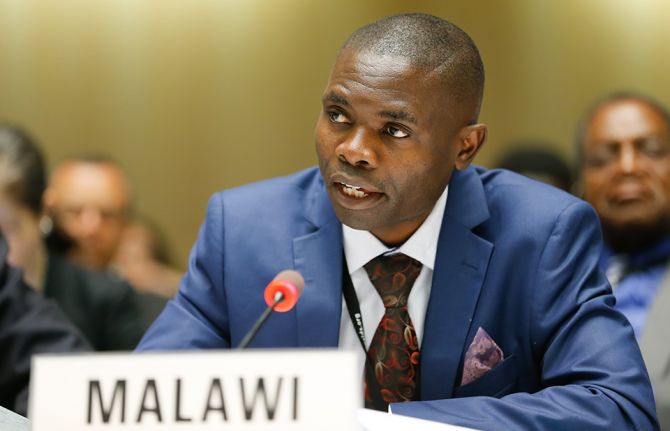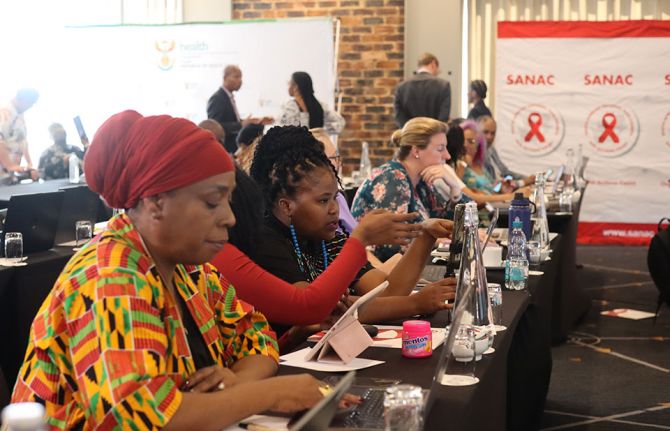

Feature Story
Malawi: remember where we have come from to move forward
05 June 2019
05 June 2019 05 June 2019Dan Namarika, the Principal Secretary for Health in Malawi, graduated from the College of Medicine in 1999 as one of the first students to follow their entire medical training in Malawi. His long career as a medical doctor, which included four years as personal physician to the late President Bingu wa Mutharika, was prompted by a desire to act against AIDS.
“The reason I chose medicine was because of AIDS. I couldn’t believe there was an illness like this with no cure. I remember the first case in my neighbourhood. It was a lady who succumbed to AIDS after a chronic illness. I have had family members that have died. My long history has been impacted on by AIDS,” he says.
Since the peak of the HIV epidemic to which Mr Namarike refers, when there were 110 000 new infections (in 1993 and 1994) and 65 000 deaths because of AIDS-related illnesses (in 2004 and 2005), Malawi has made good progress in its HIV response.
This progress can be attributed to the introduction of innovations such as the test and start strategy in 2016, which offers immediate HIV treatment for all people living with HIV and Option B+ in 2011, a prevention of mother-to-child transmission of HIV strategy that ensures that all pregnant women living with HIV have lifelong access to HIV treatment.
As a result, new HIV infections in Malawi have dropped by 40%, from 64 000 in 2010 to 39 000 in 2017, and AIDS-related deaths by half, from 34 000 in 2010 to 17 000 in 2017. Life expectancy continues to rise, from a mere 46 years in 2004 to 64 in 2018, and projections are that it will rise to 74 by 2030.
In 2017, 92% of pregnant women living with HIV in Malawi accessed services to prevent mother-to-child transmission of HIV. This lowered the number of new HIV infections among children (0–14 years) to an all-time low of 4900 in 2017.
Mr Namarika attributes these successes in large part to the multisectoral HIV response and high-level political commitment and leadership. “Besides policies being made at the highest levels of government, we also have ministries other than health involved, such as the treasury, gender, education and local government; we have civil society, the faith-based sector, cultural leaders and technical assistance from development partners, such as UNAIDS,” he says.
He also praises programmatic innovations, such as task shifting from doctors to nurses and community health-care workers, which has helped to reach more people with HIV testing and treatment services.
The 2015–2020 National Strategic Plan for HIV and AIDS has the 90–90–90 targets at its heart, with ending AIDS by 2030 in Malawi as the end goal. Malawi has made good progress in the number of people living with HIV who know their status (90%) and the number of people living with HIV who are on HIV treatment (71%). More work is needed to increase the number of people living with HIV who have suppressed viral loads (61%), which puts Malawi at risk of not meeting the targets in the next 500 days.
The major obstacle to Malawi’s progress in meeting the targets, according to Mr Namarika, is people being left behind because of socioeconomic and structural disparities driven by power relationships, such as poverty, unemployment and gender inequality. He also believes that a location–population approach is needed to address vulnerabilities exacerbated by migration and natural disasters, such as the drought–flood cycle experienced by people located in the south-east of the country.
Another challenge in the national AIDS response is high new HIV infections among adolescent girls and young women between the ages of 15 and 24 years, who accounted for 9500 new infections in 2017—more than double that of their male counterparts (4000).
“Most young people cannot make ends meet. This puts girls most at risk—their rights can be easily trampled on by older men. Also, health-seeking behaviour among young men needs to be improved,” says Mr Namarika.
However, Mr Namarika believes that the biggest obstacle to progress in the AIDS response is complacency.
“When I was a young medical doctor on some days we would have 19 deaths just in the paediatric ward alone. Not in the whole hospital, just in that one ward. Now, the young doctors don’t see that anymore, so they don’t believe that HIV is real,” he says.
He believes that it is critical to continue to engage with communities on AIDS with the same urgency that there was in the early 2000s, so that the significant gains that the country has made are not lost.
“If the cost of AIDS is not regarded as one of the biggest historical disasters we have experienced in the 54 years of our independence, then we have lost our history,” he insists.
The way forward primarily is to continue financing the AIDS response and to put more emphasis on HIV prevention. This will require a growing domestic investment, as well as convincing development partners to put more external sources of funding into HIV prevention, he says.



